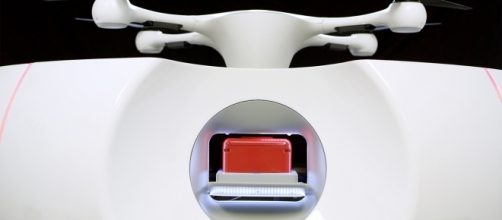Between Uber’s self-driving initiative, Google’s nine-year-long project, Tesla’s controversial software, and barely-disclosed programs by Apple, Ford, Toyota, and numerous others, it’s tempting to look at the current state of Robotics as one big driverless car extravaganza. Whether any of us see self-driving cars fully deployed in our lifetime remains the open question. But in the meantime, robots are already flying in airspace, roaming the corridors of brand-name hotels or making countless products on the industrial assembly line. They are going mainstream as service providers.
“It’s not about being a robotics company,” said Rich Mahoney, CEO, and co-founder of Superflex, a start-up which produces “powered clothing” with small, flexible motors. “It’s about producing products that you’re creating for customers.” Mahoney delivered his remarks in a panel discussion during “Robots on the Rise,” a day-long conference held Monday in Mountain View, California and organized by Silicon Valley Forum and NEDO, a research and development organization based in Japan.
Drone delivery in Switzerland
A drone delivery service to shuttle blood and medical supplies between hospitals is about to go live in Zurich, Switzerland. Matternet has developed a drone network that will fly from one fixed base station to another, with a range of 12 miles and carrying a payload of 4.5 pounds.
Matternet’s model offers the intriguing prospect that today’s consumer acceptance of one or two days to deliver urgent items could be about to change dramatically. “How long will it take for us not to accept a delivery beyond an hour?” was the question posed by Andreas Raptopoulos, Matternet’s CEO, during one conference discussion.
Carrying packages in unmanned aircraft is one thing. Carrying human passengers is quite another. Lilium Jet is working on an unmanned all-electric, vertical take-off two-seat plane that it recently tested in Munich, Germany. Airbus also recently tested its autonomous Sagitta jet-propelled aircraft in South Africa.
“There’s no reason today why we should have pilots in aircraft,” said Henrik Christensen, a professor of computer science at the University of California, San Diego.
He cited studies which have shown an average of 17 minutes total in pilot/passenger interaction during cross-country U.S. flights.
Robots on the hotel staff
Travelers who check into a Hilton Hotel may soon be greeted by a robotic concierge. The hotel chain has rolled out “Connie” (named after founder Conrad Hilton), an IBM Watson-enabled concierge that can answer guest questions and recommend visits to local attractions. Another company – Savioke – has developed a delivery robot that carries towels and toiletries directly to a hotel guest’s room.
While these and other robotic advances show how rapidly the autonomous industry is progressing, driverless cars seem to be stuck in first gear. At one panel discussion on Monday to discuss the current state of driverless mobility, the big debate was whether autonomous vehicle producers would be better off pursuing deployment in “Level 4” environments, where the weather is ideal, and there is no road construction to navigate, rather than “Level 5” where conditions can be extreme.
“Level 5 is still very much a research topic right now,” said Glenn Schuster, director of technical marketing at NVIDIA.
There is also a growing consensus that the first deployed robotic cars will be to fleet businesses rather than to consumers. Ford recently announced that it plans to deliver its first fleet of robotic cars to taxi and delivery services by 2021. “We don’t think it makes sense to sell to the consumer for the first generation,” said Dragos Maciuca, technical director for Ford.
One issue that may be holding driverless cars back is an unwillingness on the part of car makers to share data. Autonomous vehicles are big data collectors and that information in aggregate could advance learning models more rapidly.
But companies are fearful that turning the data loose will hurt their competitive position. “We as a company are not ready to share that data yet,” said Kah Seng Tay, vice president of engineering at Drive.ai.
As the autonomous revolution moves forward, we can all expect to see more examples of robotics in the course of our daily routines. Just don’t expect the absence of two hands on the steering wheel anytime soon.


